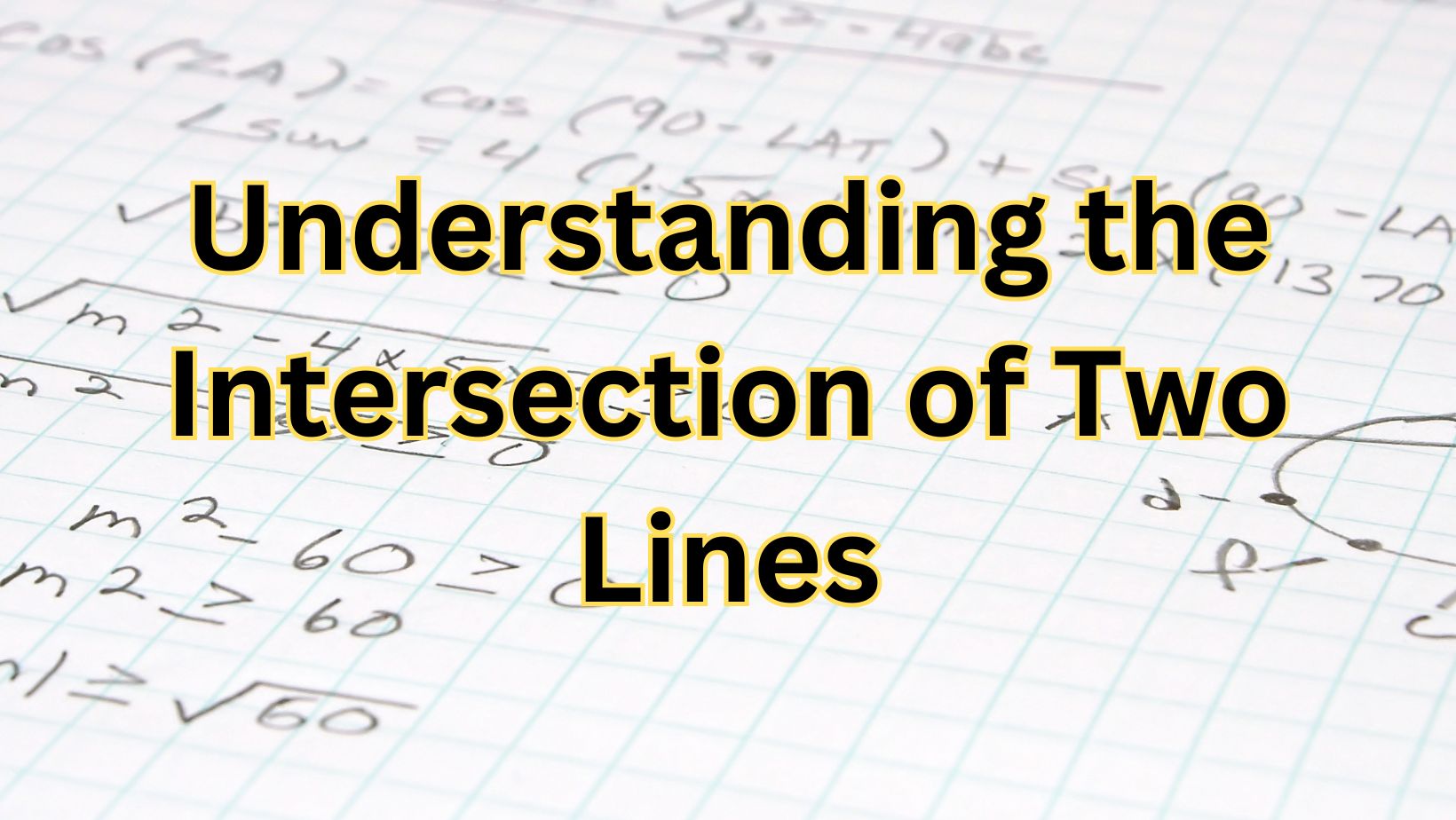The concept of “The Intersection of Two Lines” is a fundamental topic in geometry that has profound implications in mathematics, physics, engineering, and countless other fields that utilize mathematical analyses to solve real-world problems. Intersecting lines cross each other at a specific point, and understanding this crossing point is crucial for analyzing spatial relationships, solving equations, and interpreting data in two dimensions.
This article delves into the basics of intersecting lines, exploring how to determine if and where two lines intersect and the significance of their intersection in various applications.
Defining the Intersection
What Is It?
At its most basic level, the intersection of two lines refers to the point at which two lines meet or cross each other. This point, if it exists, is unique for a pair of lines and is characterized by a specific set of coordinates ((x, y)). The concept assumes that the lines are on the same plane—this is, they are coplanar.
Types of Intersections
The nature of the intersection depends on the orientation and equation of the lines involved:
- One Intersection Point: Most common when two distinct, non-parallel lines cross each other.
- No Intersection Point: Occurs with parallel lines that never meet, no matter how far they are extended.
- Infinite Intersection Points: This special case arises with coincident lines, where one line lies exactly on top of the other, effectively making them the same line.
Identifying the Intersection Point
- Using Algebraic Methods: The most direct approach to finding the intersection of two lines is by solving their equations simultaneously. This involves setting the equations equal to each other and solving for the variables. For lines represented in the slope-intercept form (y = mx + b), where (m) is the slope and (b) is the y-intercept, this method can swiftly yield the point of intersection.
- Graphical Interpretation: Graphically, plotting both lines on a Cartesian plane allows for a visual identification of the intersection point. This method not only provides a quick way to determine if an intersection exists but also offers insights into the nature of the intersection, especially in educational settings where visual learning is emphasized.
Applications in Real Life and Mathematics
Systems of Equations
The intersection of lines serves as a key method for resolving systems of linear equations. Every equation is visualized as a line, and the point where these lines meet constitutes the solution to the system. This technique is vital across numerous disciplines such as economics, engineering, and computer science, where identifying a unified answer to several conditions is imperative.
Geometry and Trigonometry
In geometry, the concept of intersection is fundamental to understanding the properties of shapes and their relationships. It's integral to the study of polygons, angles, and trigonometric functions, often serving as a basis for proving theorems or solving geometric problems.
Navigation and Mapping
Intersections have practical applications in navigation systems, where the crossing of paths often represents significant points on a map. In GIS (Geographic Information Systems), intersections help in mapping out efficient routes and understanding geographical layouts.
Conclusion
As we conclude, it's essential to remember that the intersection of two lines is a foundational concept in mathematics, with practical significance reaching into various disciplines such as physics, engineering, computer graphics, and more. Understanding this point of intersection not only provides solutions to systems of linear equations but also helps in visualizing spatial relationships and in the graphical representation of mathematical problems. Whether these lines cross paths on a Cartesian plane or a navigational map, recognizing their intersection unlocks profound insights into how we interpret and interact with our world—both physically and digitally.


